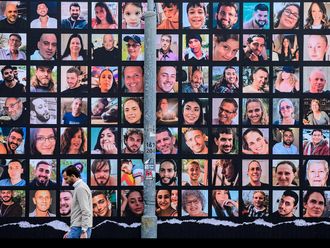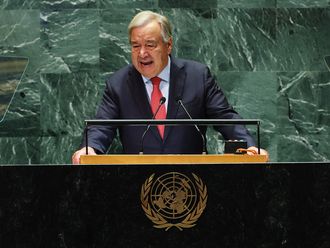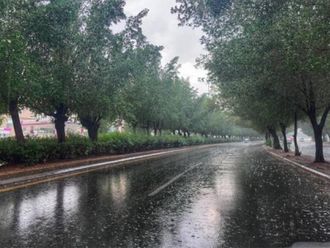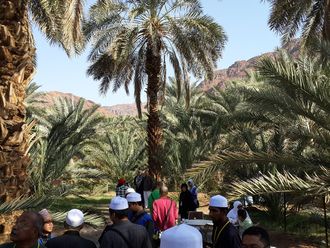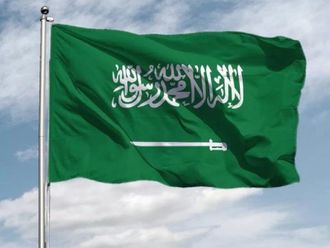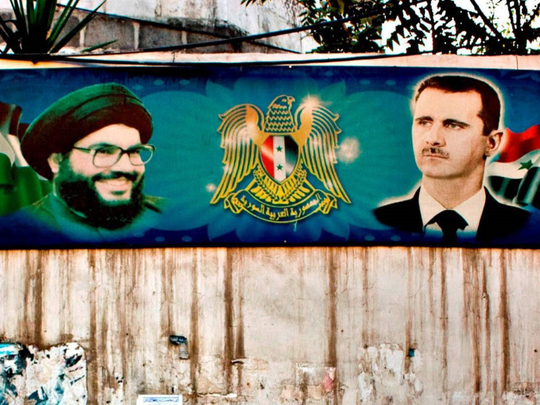
Dubai: For history buffs and tourists, Bab Touma is one of the seven gates inside the historical walls of Old Damascus, a geographical landmark of early Christianity.
It owes its name to Thomas, one of the twelve apostles of Jesus Christ. For Syrian teens, it is the main night gateway to a wide assortment of pubs, bars, and restaurants with live music, including Tao, the Syrian-version of Buddha Bar.
The nightlife itself is still there, despite occasional mortar attacks from the Damascus suburbs, but Bab Touma Square has lost all of its features. Once decorated with headlights and flowers, it has now become a bulletin board for Hezbollah posters and pictures of Iranian and Shiite martyrs killed in the five-year Syria war.
A checkpoint manned by armed men now slices Bab Touma Square in two, parking is prohibited, and body searches are common.
Speaking to Gulf News on the condition of anonymity, one Christian resident of Bab Touma said: “The posters have totally changed and destroyed the feel and look of Bab Touma.”
Walking into the Old City, one finds posters of Hassan Nasrallah and Hezbollah memorabilia on sale, ranging from key chains and mugs to small flags, wallets, pins, and T-shirts.
Cars with black-tinted windows and no licence plates are common throughout old and modern Damascus, with Shiite chants blaring from the windows.
Most are decorated with Hezbollah flags, Nasrallah posters, and the ‘Sword of Ali,’ the son-in-law of Prophet Mohammad (PBUH) to whom Shiites pledge allegiance. Strangely these embellishments are carried out by Lebanese and Iranian troops and civilian personnel in Syria, rather than by Syrian Shiites.
On Ashura, the tenth day of Muharram of the Islamic Calendar, Syrian Shiites used to mourn the death of Imam Ali’s son, killed in Karbala, with solemn speeches and black flags. It was always a serious event, respected by Sunnis and Shiites alike, but since Hezbollah marched into Syria in 2012, it has become a wild and chaotic scene, marked with self-flagellation, wailing marches, and chest-thumping, as customarily done in Shiite strongholds of Beirut.
This is very new to Damascus and Syrian Shiites are unhappy with what is being done in their name, but are completely powerless at stopping it.
One reason is fear. Syrian Shiites, combined with Alawites, make up only 12 per cent of Syria’s population.
In Damascus they have traditionally lived in Hay Al Ameen, an affluent neighbourhood that meets and blends with Hay Al Yahoud, the Jewish quarter of the Old City.
For three years now, they have been repeatedly targeted by Islamist rebels of the Damascus countryside for no other crime than being Shiites, accused of being proteges of Iran.
Then came a series of terrorist attacks on Shiite suburbs of Damascus, the most recent being at the Sayyida Zeinab Shrine last June, which killed 20 civilians.
The shrine, located 10km south of central Damascus, is heavily guarded by Hezbollah forces and Shiite civilians who were given arms three years ago to defend their neighbourhoods, at the advice of Iran.
In February, Daesh struck at the very same location, killing 134 people. With no other choice, Syrian Shiites rallied behind Hezbollah behind the high walls of their old quarters, like any minority would do in times of war, fearing more revenge attacks and mass punishment.
Hezbollah was providing what the Syrian state was failing to give: arms and protection. Hezbollah was the only player willing to give them arms they badly needed, claiming that if they didn’t support its war effort, they would collectively be butchered.
Syrian Shiites are afraid of what the future will have in store for them, if the regime and its allies lose the war. Because of their religious background, they are being blamed for crimes they did not commit.
For years, Damascus Shiites lived side-by-side with their Sunni brothers, with no discrimination whatsoever, even after the Iranian Revolution of 1979.
They always viewed themselves as Syrian Arabs more than Shiites, and were never too fond of Ayatollah Khomeini when he first graced the scene in 1979. They saw him as nothing more than a Persian history-maker, drawing no similarities with Iran because of common religion.
That did not change after the emergence of Hezbollah in the early 1980s, not even after Nasrallah’s rise in 1994, and they only started identifying themselves as “Shiite” after the Syrian Opposition labelled them as such in 2011. Before the Lebanon War of 2006, there was not a single reference to Shiite Islam or Hezbollah in the streets of Hay Al Ameen in Damascus or any of the Shiite villages of northern Syria.
It wasn’t even common in their homes. Several top artists hailed from the Shiite community and never saw themselves or were referred to other than Syrian, including pioneer comedian Duraid Lahham and Abbas Al Nouri, the iconic star of the celebrated television series Bab Al Hara.


